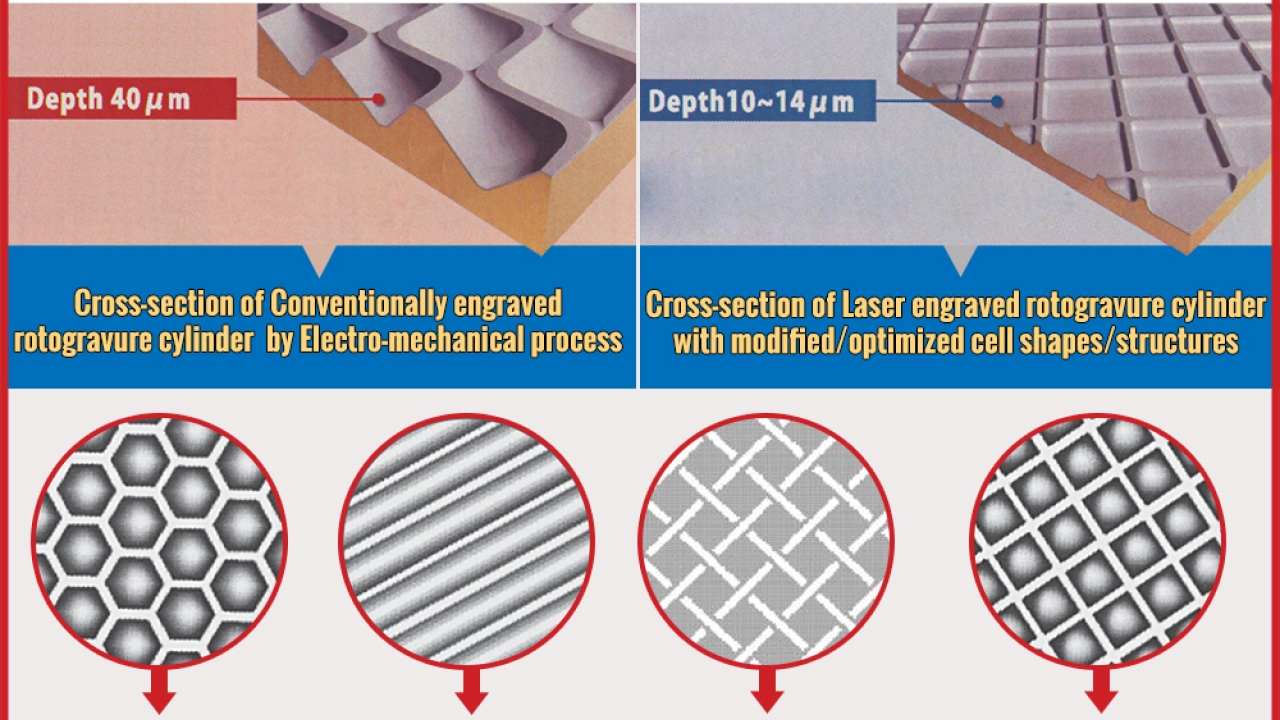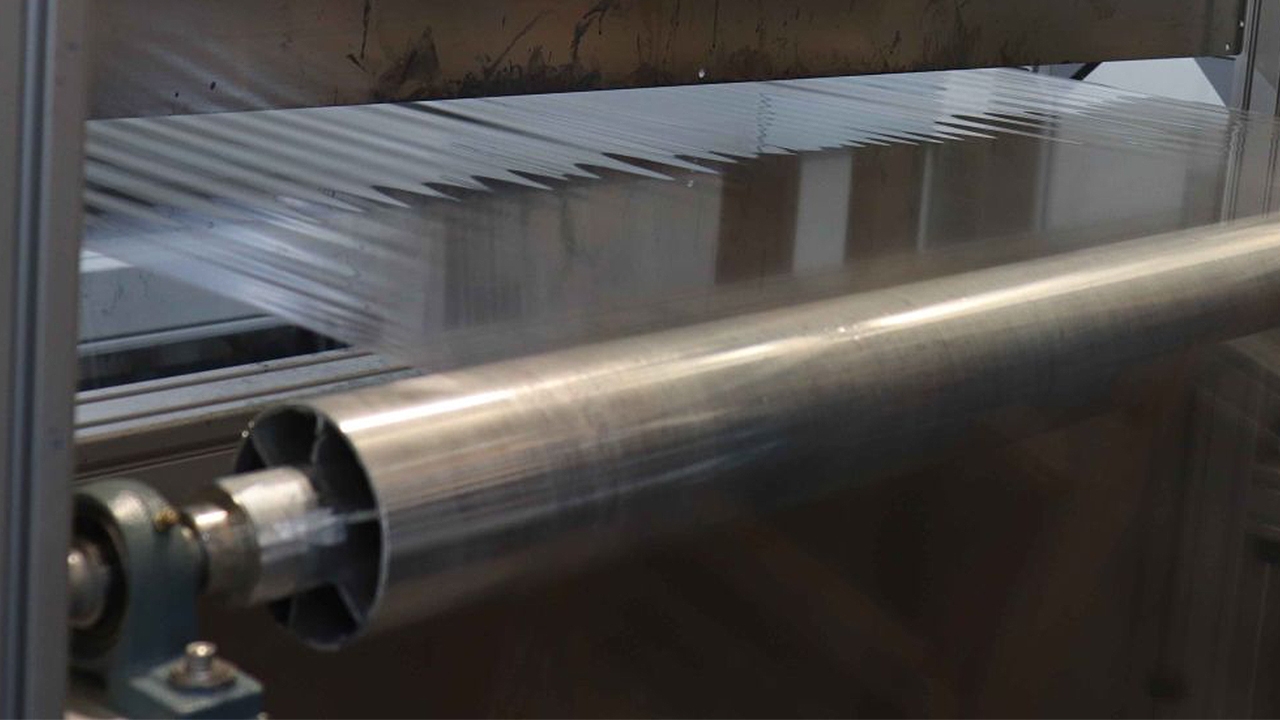Uflex optimizes cell structures of rotogravure cylinders
The Cylinder Business division of Uflex has optimized cell structures of laser engraved rotogravure cylinders, resulting in 20-25 percent less ink consumption than compared to electro-mechanically engraved cylinders to produce the same image resolution and enhancement.

Uflex said printing output by laser engraved cylinders is enhanced and in higher high definition when compared to printing by an electro-mechanically engraved cylinder, and, unlike electro-mechanical engraving which produces a conventional cell shape, laser engraving offers flexibility towards altering cell shapes and structures for the rotogravure cylinders.
P.K. Agarwal, joint president, Cylinders Business, Uflex explained: ‘On the laser engraving set-up, our team has been able to create various modifications on honeycomb cell structure, line cell structure, TB cell structure and others, which in turn during the print run render solid backgrounds, coating with high and low depths, other specialized coatings, vignettes and half tone images, among several others.’
The volume of ink carried in a conventional cell structure achieved through electro-mechanical engraving is much more than that in the modified or optimized cell structure achieved by laser engraving, while the face opening of the laser engraved cell structure is greater than the conventional cell structure. This means a reduced volume of ink is transferred on a larger area of substrate, effectively giving more print coverage with a smaller amount of ink by laser engraved cylinder, Uflex said.
‘We carried out a comparison test under standard operating conditions for the same printing job with white solvent ink for continuous tone using an electro-mechanically engraved rotogravure cylinder having conventional cell structure and a laser engraved cylinder having optimized cell structure,’ said Agarwal. ‘The viscosity of ink used was 14 saybolt seconds in both the cases. The results in terms of ink saving have been extremely impressive. The ink consumption in the second case was almost 22.5 percent less than that in the electromechanically engraved cylinder. This is quite a feat in terms of savings towards the running costs incurred by a convertor of flexible packaging.’
Other advantages Uflex has outlined in using laser engraved rotogravure cylinders with a modified cell structure are reduced solvent consumption in preparing the ink for printing, low carbon dioxide emission, lower power consumption by the printing press and better printability with exact dot gain is achieved.
Ashok Chaturvedi, chairman and managing director, Uflex, said, ‘This is a classic case of process improvement for the converting fraternity of flexible packaging. I am glad that making the most of the laser engraving technology my team of engineers at Cylinders Business has been able to modify and optimize the cell structures of the rotogravure cylinder thereby bringing a substantive reduction in ink consumption during printing. Not only does this bring down the operating costs of the convertors but also makes the printing process reasonably eco-friendly.’
Stay up to date
Subscribe to the free Label News newsletter and receive the latest content every week. We'll never share your email address.

